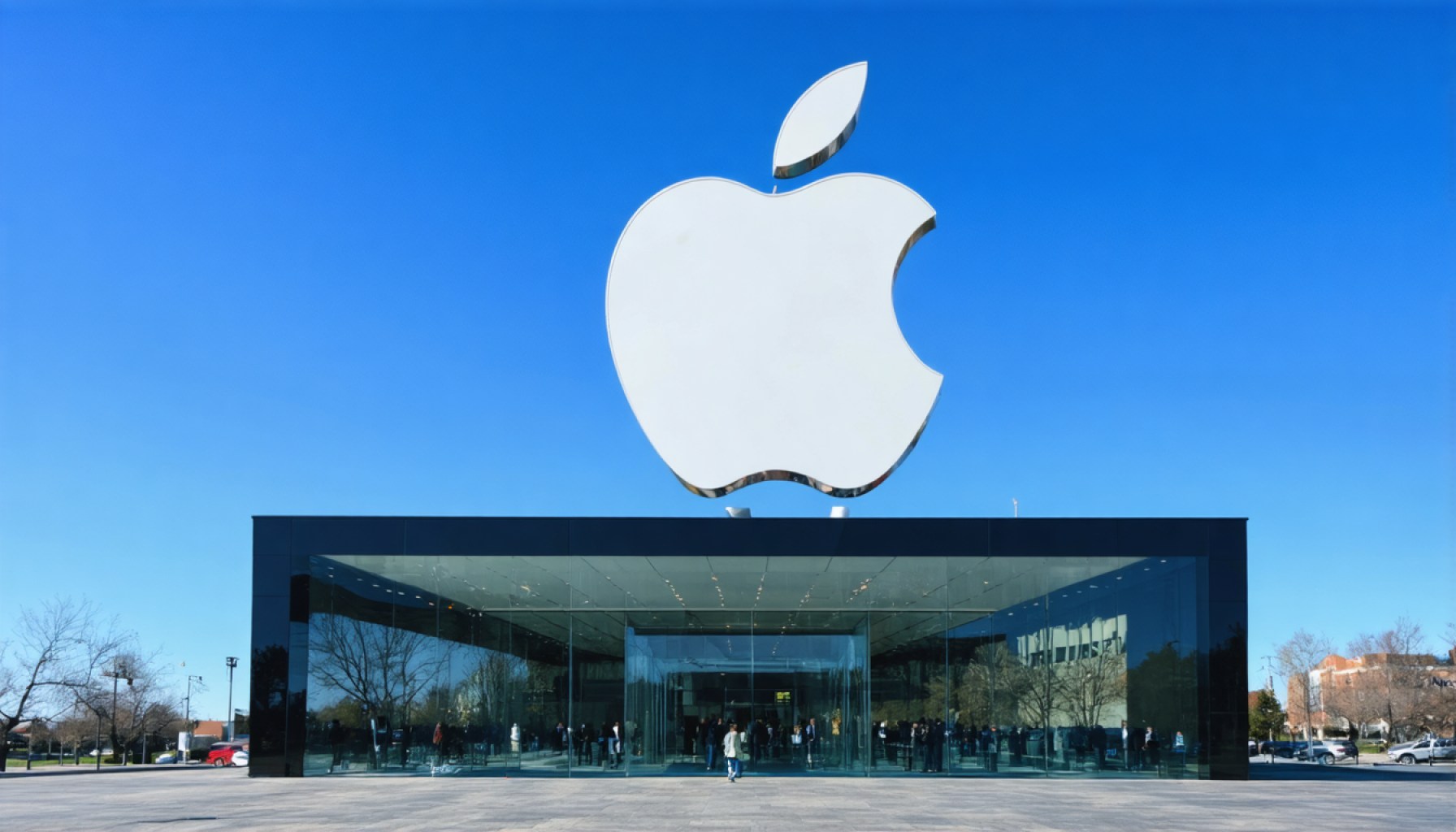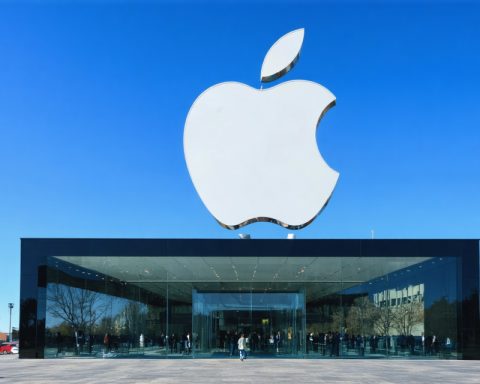- Apple boasts a $3.7 trillion market cap, dominating the S&P 500 and Nasdaq-100 indices.
- The brand’s ecosystem fosters consumer loyalty, with iPhone sales contributing over half of its revenue.
- Apple’s services sector, including the App Store and Apple TV, drives profitability with high margins.
- The introduction of Apple Intelligence and budget-friendly models like the iPhone 16e supports growth.
- Investors face challenges with Apple’s high price-to-earnings ratio and stagnant revenue.
- In China, Apple’s influence weakens amid competition and strategic partnerships.
- The future of Apple’s revenue-sharing deal with Google is uncertain due to legal scrutiny.
- Current investors may consider holding rather than increasing stakes due to potential risks.
Few brands can match the commanding presence of Apple, a titan with a staggering $3.7 trillion market cap. This tech behemoth controls the lion’s share of both the S&P 500 and Nasdaq-100 indices, subtly weaving itself into the portfolios of countless investors. But, does investing now make sense?
The allure of Apple springs from its unrivaled brand—luxury meets reliability in every sleek iPhone and seamless MacBook. This carefully curated ecosystem locks users into an Apple-centric world, turning device upgrades into a routine ritual. The iPhone, consistently accounting for over half of Apple’s revenue, thrives on consumer loyalty and the inevitable march of technological advancement.
Yet, the true powerhouse is Apple’s rapidly expanding services sector. From the App Store to Apple TV, this segment’s hefty margins propel profitability, far exceeding the returns from hardware sales. And with the introduction of Apple Intelligence and budget-friendly models like the iPhone 16e, the stage seems set for continued growth.
However, the crown weighs heavy. Investors face an inflated price-to-earnings ratio, ballooning from 12 to nearly 39 over recent years. Meanwhile, stagnant revenue and lengthening product cycles cast shadows. In China, a fierce battleground of local rivals, Apple’s influence wanes despite strategic alliances with giants like Alibaba.
The uncertain future of Apple’s lucrative Google revenue-sharing arrangement, currently under legal scrutiny, adds another layer of complexity. This partnership could evaporate, risking billions in annual profit—a daunting uncertainty that advises caution.
For those with shares nestled within ETFs tracking major indices, a prudent approach may be to observe, not dive deeper. Apple’s triumph is undeniable, but its path forward brims with both potential and peril.
Apple Stock: Is It Still a Safe Bet for Investors?
How-To Steps & Life Hacks: Investing in Apple
1. Understand the Landscape: Familiarize yourself with Apple’s core business segments—iPhones, Macs, Services, Wearable products including the Apple Watch, and its burgeoning ecosystem.
2. Study Financials: Examine Apple’s financial statements to comprehend revenue splits and margins. The growth in services is central to Apple’s profitability.
3. Track Market Trends: Apple’s performance is often tethered to market trends like smartphone demand, subscription services growth, and technological advancements.
4. Risk Assessment: Evaluate external risks such as regulatory challenges, especially the Google revenue-sharing deal, which is currently under scrutiny.
5. Portfolio Diversification: Incorporate Apple within a diverse portfolio to balance potential volatility against its historical financial strength.
Real-World Use Cases
– Consumer Ecosystem: Apple’s strength lies in its ecosystem, encouraging users to remain within the Apple product family, boosting customer retention.
– Business Integration: Enterprises are increasingly adopting Apple products for their reliability and security features.
Market Forecasts & Industry Trends
– Services Growth: Revenue from services, including Apple Music, extends healthy growth prospects beyond physical products.
– Emerging Markets: Apple’s expansion in places like India may offset losses in saturated markets like China.
– Innovations: Future technologies like augmented reality (AR) and AI integrations could spur new product categories.
Reviews & Comparisons
– Competitor Analysis: Compare Apple’s performance with key competitors like Samsung or Microsoft against metrics like innovation, user base, and market penetration.
– Product Reviews: Independent reviews highlight user satisfaction with products like the new iPhone and MacBook lines, emphasizing build quality and performance.
Controversies & Limitations
– Regulatory Issues: Apple’s partnership with Google for search is under scrutiny, posing potential financial threats if renegotiations fail or legal rulings are adverse.
– Geopolitical Pressures: The China market presents both opportunities and significant challenges due to political and local competitor dynamics.
Features, Specs & Pricing
– Product Lines: Comprehensive details on iPhone, iPad, Mac, and Apple Watch, including tech specs and price ranges.
– Budget Models: Introduction of affordable models like the iPhone 16e aims to capture cost-sensitive segments.
Security & Sustainability
– Data Privacy: Apple’s commitment to user privacy remains a competitive advantage, building trust among consumers.
– Environmental Programs: Initiatives for recycling and sustainable manufacturing are integral to brand perception.
Insights & Predictions
– AI and Services: Expect continued integration of AI technologies in services and hardware, enhancing user experience and creating new revenue streams.
– Market Stability: As one of the largest components of key US indices, Apple’s stock performance can indicate broader market trends.
Pros & Cons Overview
Pros:
– Strong brand loyalty and technological innovation.
– Robust growth in services yielding higher profit margins.
– Expanding in international markets with cost-effective products.
Cons:
– High valuation and P/E ratio raise concerns about stock overvaluation.
– Potential disruption from legal challenges and loss of partnerships.
– Pressure from declining market share in China.
Actionable Recommendations
– Monitor Industry News: Stay informed about legal developments affecting Apple’s partnerships.
– Evaluate Diversification: Consider balancing investments between hardware-heavy and services-focused tech companies.
– Explore ETFs: For risk-averse investors, ETFs with substantial Apple shareholdings provide a cautious approach.
For more insights into investing strategies and market analysis, visit the official Apple website and major financial news outlets.









